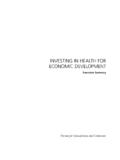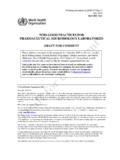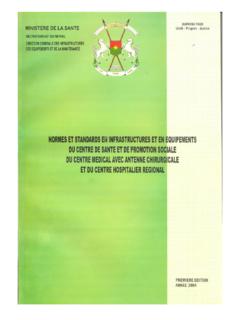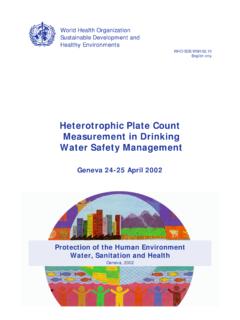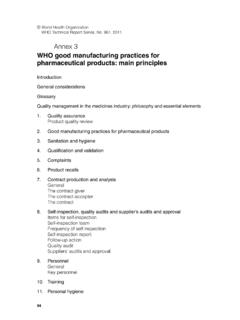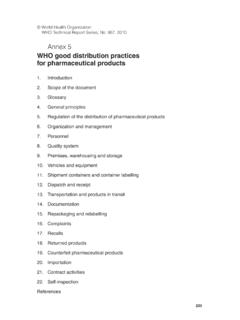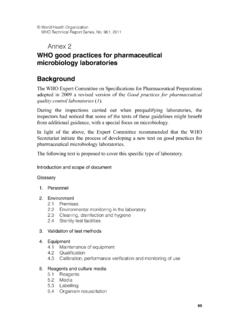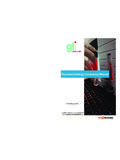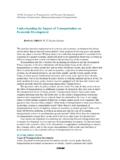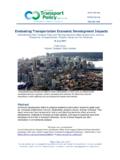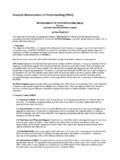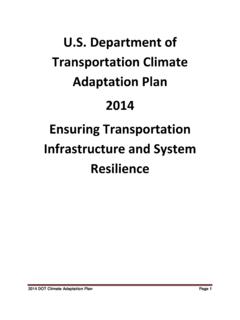Transcription of Chapter 1 Understanding disability - WHO
1 Chapter 1 Understanding disability I am a black woman with a disability . Some people make a bad face and don t include me. People don t treat me well when they see my face but when I talk to them sometimes it is better. Before anyone makes a decision about someone with a disability they should talk to them. Hayde Can you imagine that you re getting up in the morning with such severe pain which disables you from even moving out from your bed? Can you imagine yourself having a pain which even requires you to get an assistance to do the very simple day to day activi-ties? Can you imagine yourself being fired from your job because you are unable to per-form simple job requirements? And finally can you imagine your little child is crying for hug and you are unable to hug him due to the pain in your bones and joints? Nael My life revolves around my two beautiful children. They see me as Mummy , not a person in a wheelchair and do not judge me or our life.
2 This is now changing as my efforts to be part of their life is limited by the physical access of schools, parks and shops; the attitudes of other parents; and the reality of needing 8 hours support a day with my per-sonal cannot get into the houses of my children s friends and must wait outside for them to finish playing. I cannot get to all the classrooms at school so I have not met many other parents. I can t get close to the playground in the middle of the park or help out at the sporting events my children want to be part of. Other parents see me as different, and I have had one parent not want my son to play with her son because I could not help with supervision in her inaccessible house. Samantha Near the start of the bus route I climb on. I am one of the first passengers. People continue to embark on the bus. They look for a seat, gaze at my hearing aids, turn their glance quickly and continue walking by. Only when people with disabilities will really be part of the society; will be educated in every kindergarten and any school with personal assistance; live in the community and not in different institutions; work in all places and in any position with accessible means; and will have full accessibility to the public sphere, people may feel comfortable to sit next to us on the bus.
3 Ahiya 1 Understanding disability3 disability is part of the human condition. Almost everyone will be temporarily or permanently impaired at some point in life, and those who survive to old age will experience increasing difficulties in functioning. Most extended families have a disabled member, and many non-disabled people take responsibility for supporting and caring for their relatives and friends with disabilities (1 3). Every epoch has faced the moral and political issue of how best to include and support people with disabilities. This issue will become more acute as the demographics of societies change and more people live to an old age (4).Responses to disability have changed since the 1970s, prompted largely by the self-organization of people with disabilities (5, 6), and by the growing tendency to see disability as a human rights issue (7). Historically, people with disabilities have largely been provided for through solutions that segre-gate them, such as residential institutions and special schools (8).
4 Policy has now shifted towards community and educational inclusion, and medically-focused solutions have given way to more interactive approaches recognizing that people are disabled by environmental factors as well as by their bodies. National and international initiatives such as the United Nations Standard Rules on the Equalization of Opportunities of Persons with Disabilities (9) have incorporated the human rights of people with disabilities, culminating in 2006 with the adoption of the United Nations Convention on the Rights of Persons with Disabilities (CR PD).This World report on disability provides evidence to facilitate imple-mentation of the CRPD. It documents the circumstances of persons with disabilities across the world and explores measures to promote their social participation, ranging from health and rehabilitation to education and employment. This first Chapter provides a general orientation about dis-ability, introducing key concepts such as the human rights approach to disability , the intersection between disability and development, and the International Classification of Functioning, disability and Health (ICF) and explores the barriers that disadvantage persons with is disability ?
5 disability is complex, dynamic, multidimensional, and contested. Over recent decades, the disabled people s movement (6, 10) together with 4 World report on disabilitynumerous researchers from the social and health sciences (11, 12) have identified the role of social and physical barriers in disabil-ity. The transition from an individual, medical perspective to a structural, social perspective has been described as the shift from a medical model to a social model in which people are viewed as being disabled by society rather than by their bodies (13).The medical model and the social model are often presented as dichotomous, but disability should be viewed neither as purely medical nor as purely social: persons with disabilities can often experience problems arising from their health condition (14). A balanced approach is needed, giving appropriate weight to the differ-ent aspects of disability (15, 16).
6 The ICF, adopted as the conceptual frame-work for this World report on disability , under-stands functioning and disability as a dynamic interaction between health conditions and contextual factors, both personal and envi-ronmental (see Box ) (17). Promoted as a bio-psycho-social model , it represents a workable compromise between medical and social models. disability is the umbrella term for impairments, activity limitations and par-ticipation restrictions, referring to the negative aspects of the interaction between an indi-vidual (with a health condition) and that indi-vidual s contextual factors (environmental and personal factors) (19).The Preamble to the CRPD acknowledges that disability is an evolving concept , but also stresses that disability results from the inter-action between persons with impairments and attitudinal and environmental barriers that hinder their full and effective participation in society on an equal basis with others.
7 Defining disability as an interaction means that disabil-ity is not an attribute of the person. Progress on improving social participation can be made by addressing the barriers which hinder per-sons with disabilities in their day to day person s environment has a huge impact on the experience and extent of disability . Inaccessible environments create disability by creating barriers to participation and inclusion. Examples of the possible negative impact of the environment include: a Deaf individual without a sign language interpreter a wheelchair user in a building without an accessible bathroom or elevator a blind person using a computer without screen-reading is also affected by environmental factors, such as safe water and sanitation, nutri-tion, poverty, working conditions, climate, or access to health care. As the World Health Organization (WHO) Commission on Social Determinants of Health has argued, inequality is a major cause of poor health, and hence of disability (20).
8 The environment may be changed to improve health conditions, prevent impairments, and improve outcomes for persons with disabilities. Such changes can be brought about by legisla-tion, policy changes, capacity building, or tech-nological developments leading to, for instance: accessible design of the built environment and transport; signage to benefit people with sensory impairments; more accessible health, rehabilitation, edu-cation, and support services; more opportunities for work and employ-ment for persons with factors include a wider set of issues than simply physical and information access. Policies and service delivery systems, including the rules underlying service pro-vision, can also be obstacles (21). Analysis of public health service financing in Australia, for 5 Chapter 1 Understanding disabilityBox New emphasis on environmental factorsThe International Classification of Functioning, disability and Health (ICF) (17) advanced the Understanding and measurement of disability .
9 It was developed through a long process involving academics, clinicians, and impor-tantly persons with disabilities (18). The ICF emphasizes environmental factors in creating disability , which is the main difference between this new classification and the previous International Classification of Impairments, Disabilities, and Handicaps (ICIDH). In the ICF, problems with human functioning are categorized in three inter-connected areas: impairments are problems in body function or alterations in body structure for example, paralysis or blindness; activity limitations are difficulties in executing activities for example, walking or eating; participation restrictions are problems with involvement in any area of life for example, facing discrimina-tion in employment or refers to difficulties encountered in any or all three areas of functioning. The ICF can also be used to understand and measure the positive aspects of functioning such as body functions, activities, participation and environmental facilitation.
10 The ICF adopts neutral language and does not distinguish between the type and cause of disability for instance, between physical and mental health. Health conditions are diseases, injuries, and disorders, while impairments are specific decrements in body functions and structures, often identified as symptoms or signs of health arises from the interaction of health conditions with contextual factors environmental and personal factors as shown in the figure of the International Classification of Functioning, disability and HealthHealth condition(disorder or disease)Body functions and structuresParticipationActivitiesEnviron mentalfactorsPersonalfactorsThe ICF contains a classification of environmental factors describing the world in which people with different levels of functioning must live and act. These factors can be either facilitators or barriers. Environmental factors include: products and technology; the natural and built environment; support and relationships; attitudes; and services, systems, and ICF also recognizes personal factors, such as motivation and self-esteem, which can influence how much a person participates in society.
